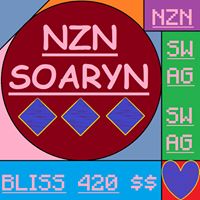Allen Harold Tanner
age ~99
from Salt Lake City, UT
- Also known as:
-
- Allen H Tanner
- Harold Allen Tanner
- Harold A Tanner
- Allan H Tanner
- Tanner Allen Harold
- Alan Tanner
- Tanner H Allen
- Phone and address:
-
4465 New Vintage Ct, Salt Lake City, UT 84124
8012615224
Allen Tanner Phones & Addresses
- 4465 New Vintage Ct, Murray, UT 84124 • 8012615224
- Salt Lake City, UT
- Bountiful, UT
- Yorba Linda, CA
Work
-
Company:Evans and sutherland computer corp
-
Address:770 Komas Dr, Salt Lake City, UT 84108
-
Phones:8015881000
-
Position:Vice president advanced displays
-
Industries:Communications Equipment
Vehicle Records
-
Allen Tanner
view source -
Address:4465 S New Vintage Ct, Salt Lake Cty, UT 84124
-
VIN:5TDZK22C97S002129
-
Make:TOYOTA
-
Model:SIENNA
-
Year:2007
Medicine Doctors

Allen Hershel Tanner
view sourceUs Patents
-
Stroke To Raster Converter System
view source -
US Patent:6496160, Dec 17, 2002
-
Filed:Apr 29, 1999
-
Appl. No.:09/301947
-
Inventors:Allen H. Tanner - Sandy UT
Calvin L. Simmons - Bountiful UT -
Assignee:Evans Sutherland Computer Corporation - Salt Lake City UT
-
International Classification:G09G 500
-
US Classification:345 31, 345 32, 345 10, 345 14, 345 17, 345 27, 345545, 348399, 348440, 348571, 348572
-
Abstract:An apparatus for converting analog stroke display signals representing electron beam generated stroke traces into raster display information for producing a raster-scan image display. The apparatus includes a sampling circuit for sampling the analog stroke display signals to produce pixel data representing sub-pixel locations covered by the stroke traces. A frame buffer is coupled to the sampling circuit to temporarily store pixel data. A filter is coupled to the frame buffer for calculating brightness of pixels based upon the amount of coverage of the pixels by a stroke trace. In addition, a raster-scan display device is coupled to the filter for receiving the pixel data from the filter to produce a raster-scan image.
-
Optical Fiber Polishing System With Depth Reference
view source -
US Patent:6600854, Jul 29, 2003
-
Filed:Mar 5, 2001
-
Appl. No.:09/799164
-
Inventors:Jesse Anderegg - Salt Lake City UT
Bret Winkler - South Jordan UT
Allen Tanner - Sandy UT -
Assignee:Evans Sutherland Computer Corporation - Salt Lake City UT
-
International Classification:G02B 626
-
US Classification:385 30, 385147
-
Abstract:A system and method for polishing an optical fiber with a polishing lap. The system comprises a substrate, an optical fiber disposed on the substrate so as to be outwardly curved, and an electrical conductor disposed over the outward curve of the optical fiber. A voltage source is connected to the electrical conductor, and the polishing lap is configured to initially abrade the electrical conductor to cause severance thereof. The position of the polishing lap when the electrical conductor is severed represents a reference point approximately indicating the surface of the optical fiber. A detector connected to the electrical conductor detects a change in voltage therein, indicating severance of the electrical conductor, and subsequently monitors the polishing depth relative to the reference point.
-
Rapidly Oscillating Laser Light Source
view source -
US Patent:6711187, Mar 23, 2004
-
Filed:Apr 22, 2002
-
Appl. No.:10/127987
-
Inventors:Allen H. Tanner - Sandy UT
Dennis F. Elkins - Draper UT
Cameron C. Farmer - Sandy UT
Yuri S. Grapov - Sandy UT -
Assignee:Evans Sutherland Computer Corporation - Salt Lake City UT
-
International Classification:H01S 313
-
US Classification:372 30, 372 25
-
Abstract:A rapidly oscillating laser light source is produced that exhibits extended pulse duration having a substantially uniform amplified output. A pulsed beam of laser light having a given wavelength, frequency, duration and intensity is produced such that the pulse shape is controlled. The pulsed beam is amplified using a fiber amplifier which exhibits inherent changes in amplifier gain at the frequencies of interest. The fiber amplifier is continuously pumped. A feedback signal is provided with the amplified pulse characteristics and is used to adjust the pulse shape of the pulsed beam of laser light before amplifying, such that the intensity is changed over the pulse duration to generate a substantially uniform amplified output during each pulse.
-
Non-Sampled Auto-Format Conversion Method
view source -
US Patent:6751001, Jun 15, 2004
-
Filed:Jan 24, 2003
-
Appl. No.:10/350917
-
Inventors:Allen H. Tanner - Sandy UT
Aaron S. McAllister - Sandy UT -
Assignee:Evans Sutherland Computer Corporation - Salt Lake City UT
-
International Classification:G02F 101
-
US Classification:359238, 359276, 359278
-
Abstract:A device for the passive conversion of one format to another includes: a laser light source at a predetermined frequency, a line converter configured to produce a fan of light, a movable lens configured to collimate the fan of light, and an array of light modulators placed such that the collimated light is incident on a portion of the light modulators. Vertical pixels of an input image are reproduced on either 1, 2, 3, etc, adjacent light modulators depending on the target image size to produce a modulated light column. Any discrepancy between the modulated light column height and the target image height is compensated for using a zoom lens. The modulated light column is then reflected to a display surface. An entire image is produced by changing the state of the array of light modulators to correspond with each of the vertical columns of the image and sweeping the vertical columns across the display surface. The method accomplishes the format conversion passively, in that, simple calculations are performed only once for each input image size.
-
Apparatus And Method For Frequency Conversion And Mixing Of Laser Light
view source -
US Patent:6763042, Jul 13, 2004
-
Filed:Dec 14, 2001
-
Appl. No.:10/017162
-
Inventors:Forrest L. Williams - Sandy UT
Yuri S. Grapov - Sandy UT
Dennis F. Elkins - Draper UT
Allen H. Tanner - Sandy UT -
Assignee:Evans Sutherland Computer Corporation - Salt Lake City UT
-
International Classification:H01S 330
-
US Classification:372 6, 372 20, 372 21, 372 22, 372 29011, 372 28
-
Abstract:A method and device for the nonlinear combination of laser light which produces a beam of uniform intensity, high spatial purity, and high conversion efficiency. The method includes emitting a laser light from a tunable distributed feedback fiber laser having both thermal and piezoelectric control elements which produces a laser light at a given frequency, wavelength, and intensity; converting the laser light in a nonlinear resonator which uses a nonlinear optical crystal for frequency conversion or mixing; and measuring the resonant frequency of the nonlinear resonator and adjusting the laser light frequency using both the thermal and piezoelectric elements of the fiber laser light source to match the resonant frequency conditions within the nonlinear resonator.
-
Ultra-High Resolution Light Modulation Control System And Method
view source -
US Patent:6856449, Feb 15, 2005
-
Filed:Jul 10, 2003
-
Appl. No.:10/617145
-
Inventors:Bret D. Winkler - South Jordan UT, US
Dennis F. Elkins - Draper UT, US
Allen H. Tanner - Sandy UT, US -
Assignee:Evans & Sutherland Computer Corporation - Salt Lake City UT
-
International Classification:G02B026/00
-
US Classification:359298, 359291
-
Abstract:A microscopic optical structure controller for providing singular control of individual microscopic optical structures of a microelectromechanical optical device by a multiplexed stream of individual pixel values generated by a pixel value source. The microscopic optical structure controller includes at least one interconnect coupled to the pixel value source for receiving the multiplexed stream of individual pixel values and at least one mapper communicating with the interconnect for extracting individual pixel values from the multiplexed stream and applying the individual pixel values to one or more individual microscopic optical structures according to a configurable mapping. A method and a driver for providing singular control of individual microscopic optical structures of a microelectromechanical optical device are also disclosed.
-
Wide Angle Scanner For Panoramic Display
view source -
US Patent:6871958, Mar 29, 2005
-
Filed:Aug 18, 2003
-
Appl. No.:10/642880
-
Inventors:Harry Streid - Salt Lake City UT, US
Rob Christensen - Salt Lake City UT, US
Allen H. Tanner - Sandy UT, US -
Assignee:Evans & Sutherland Computer Corporation - Salt Lake City UT
-
International Classification:G03B021/28
-
US Classification:353 37, 353 94, 353 98, 353 99
-
Abstract:A wide angle display system includes a linear array projector, a curved display surface, and a two-sided, substantially planar scanning mirror. The projector is configured to project an image along an optical axis to the scanning mirror. The scanning mirror continuously rotates about an axis substantially in the plane of the mirror, so as to reflect and scan the image onto the display surface.
-
Reflection Barrier For Panoramic Display
view source -
US Patent:7012669, Mar 14, 2006
-
Filed:Mar 9, 2004
-
Appl. No.:10/796556
-
Inventors:Harry Streid - Salt Lake City UT, US
Rob Christensen - Salt Lake City UT, US
Allen H. Tanner - Sandy UT, US -
Assignee:Evans & Sutherland Computer Corporation - Salt Lake City UT
-
International Classification:G03B 37/00
G03B 21/56 -
US Classification:352 69, 359451
-
Abstract:A panoramic display system includes a curved projection screen, a panoramic projector, and a substantially conically shaped barrier. The projector is configured to project an image onto the projection screen from a projection point located substantially above the projection screen. The conical barrier has a base disposed toward the bottom of the projection screen, and an apex region disposed toward the projection point. The barrier blocks scattered light from reflecting from portions of the curved screen to other portions thereof.
Resumes

Vice President And General Manager
view sourceLocation:
600 Komas Dr, Salt Lake City, UT 84108
Industry:
Computer Hardware
Work:
Evans & Sutherland
Vice President and General Manager
Vice President and General Manager
Education:
University of Utah 1977 - 2005

Instructor
view sourceLocation:
80 Industrial Way, Wilmington, MA 01887
Industry:
Higher Education
Work:
Salt Lake Community College
Instructor
Instructor
Skills:
Higher Education

Allen Tanner
view source
Allen Tanner
view source
Allen Tanner
view source
Allen Tanner
view source
Allen Tanner
view source
Allen Oliver Tanner
view sourceName / Title
Company / Classification
Phones & Addresses
Vice President Advanced Displays
Evans and Sutherland Computer Corp
Communications Equipment
Communications Equipment
770 Komas Dr, Salt Lake City, UT 84108
President
East Grouse Creek Water Co Ltd Inc
Water Supply Service
Water Supply Service
5976 S 200 E, Salt Lake City, UT 84107
8012680704
8012680704
Vice President Advanced Displays
Evans and Sutherland Computer Corp
Communications Equipment, NEC
Communications Equipment, NEC
600 Komas Dr #1600, Salt Lake City, UT 84108
770 Komas Dr, Salt Lake City, UT 84108
8015881000
770 Komas Dr, Salt Lake City, UT 84108
8015881000
THE GERMAN ME CHURCH PRESERVATION ASSOCIATION, INC
Plaxo

Linda Tanner Allen
view sourceClassmates

Allen Tanner
view sourceSchools:
A.D. Johnston Junior/Senior High School Bessemer MI 1998-2002
Community:
Carolyn Minkin, Francine Tarnaski, Thomas Schroedl, David Strachan

Allen Tanner
view sourceSchools:
Sheffield High School Memphis TN 1990-1994
Community:
Barry Yoakum, Bet Hood

Allen Tanner
view sourceSchools:
Downie Central Public School Stratford Morocco 1977-1986, North Western High School Stratford Morocco 1984-1988
Community:
Bob Crosby, Mark Horstead, Michael Koshowski, Howard Price

Allen Tanner
view sourceSchools:
Brandywine High School Wilmington DE 1970-1974
Community:
Aaron Zebrook, Arthur Foxwell, Charlie Walling, Ken Deats

Allen Tanner
view sourceSchools:
Helens View High School Portland OR 1998-2002
Community:
Crystal Healy, Denida Gaska, Maria Escalante, Ashley Miranda, Charlene Manire, Maria Ramirez, Maricela Ramirez, Mistiann Fajardo, Tawnalee Ramsey, Michelle Evans, Elmer Thomas

Allen Tanner
view sourceSchools:
Acrebrook Academy Springfield MA 1974-1978
Community:
Bradley Brown, Richard Lavinski, Elaine Crumpton, Bill Schneeloch, Janes Harris, Charles Burridge, Raymond Larocque, Mark Fuller, Edwin Fett

Allen Tanner | Plainfield...
view source
Allen Tanner | Orient-Mac...
view sourceYoutube
Myspace

Tanner Allen Free Music ...
view sourceTanner Allen's official profile including the latest music, albums, songs, music videos and more updates.
Googleplus

Allen Tanner
Relationship:
Married
Bragging Rights:
Allen Tanner, MAC, Mdiv, CPE, CAAP

Allen Tanner

Allen Tanner

Allen Tanner

Allen Tanner

Allen Tanner

Allen Tanner
view source
Tanner Allen
view source
Allen Tanner
view source
Allen Tanner
view source
Allen Tanner
view source
Allen Tanner
view source
Sandi Allen Tanner
view source
Allen Joel Tanner
view sourceFlickr
Get Report for Allen Harold Tanner from Salt Lake City, UT, age ~99

















